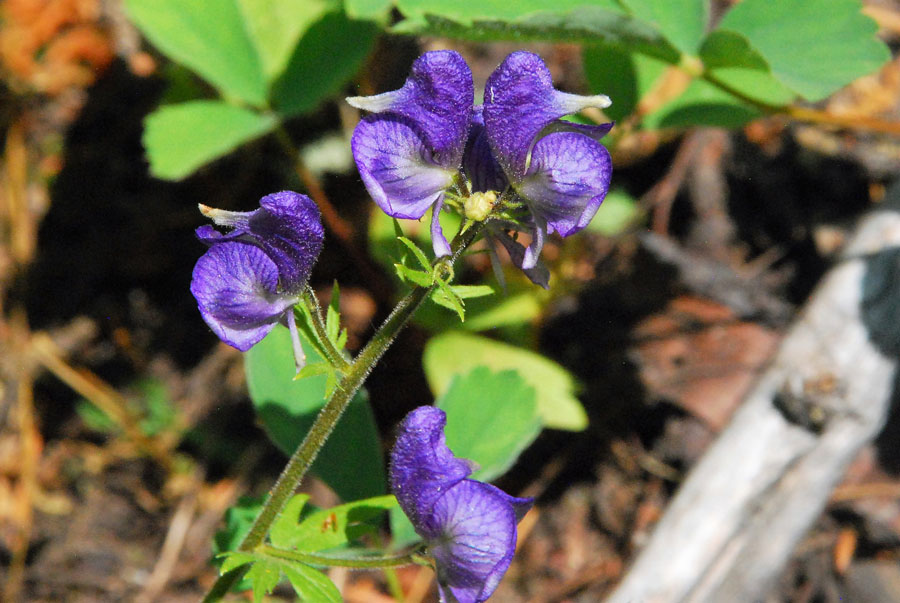Nature is full of beautiful sights, but not everything that is beautiful is good
Published at
While hiking along Darby Creek on our recent hike to the Wind Caves in Teton Valley, I was visiting with my grandchildren about the plants along the trail. We had tasted thimble berries, huckleberries and wild currents when we came across a beautiful purple flower – the Columbian monkshood.
A week later, while picking huckleberries in the Moody Creek area, I was crossing a marshy area full of monkshoods not 30 feet from a patch of huckleberries. Also known as “wolf’s bane, devil’s helmet, queen of poisons and blue rockets,” this beautiful flower begs to be picked and studied. Growing up in Teton Valley and spending a lot of time playing in the mountains, I was taught what the most poisonous things were and the monkshood was one that was impressed the most.
Usually the color is a very deep purple or blue but occasionally white and all parts of the plant are poisonous and are dangerous to people and animals. In a pamphlet prepared by Caribou-Targhee National Forest discussing 26 poisonous plants, lists the Columbian monkshood first in the flowering plants.
“Every year, many adults and children become seriously ill by consuming poisonous plants. Sometimes this poisoning is accidental, and sometimes poisoning is the result of the misidentification or misuse of medicinal herbs. Our beloved animal companions (dogs, horses, llamas, etc) may also fall victim to poisonous plants.”
The poison from this attractive plant has been known for hundreds of years. Anciently, warriors tipped their spears and arrows with it during war and even the water supplies of their enemies were poisoned with it. The poison was also used to execute criminals and used to poison bait to kill wolves.
There are some monkshood which are not poisonous and are sold as ornamental plants for gardens, but several years ago a gardener at a wealth estate in England died of a mysterious death that caused all his organs to fail. He had to be working on some monkshood flowers just prior to his death, which was listed as the cause of his death.
The Forest Service pamphlet, “Poisonous Plants of Southeastern Idaho,” is a valuable resource and should be a part of the bag of tricks for hikers, huckleberry pickers and people trying to live the wild life.
The introduction in the pamphlet ends with, “Most of the flowers and plants in the forest are harmless, so please don’t think the woods are full of danger. Take the time to be informed and enjoy nature in a safe and informed way.”
There are many sources on the internet to educate outdoor enthusiasts on what is poisonous and what plants are safe. Just google “poisonous plants in Idaho” and you will find valuable information.
When you are out-and-about, remember not everything that is beautiful is good. Some can be dangerous and even deadly.
Living the Wild Life is brought to you by The Healing Sanctuary.



